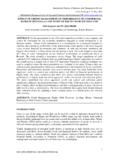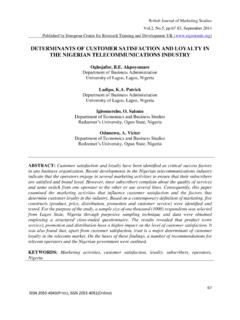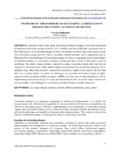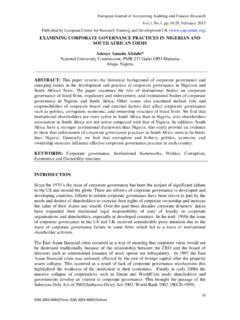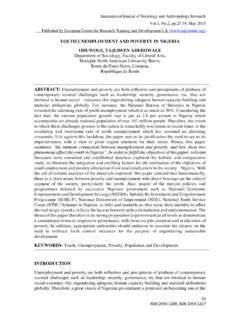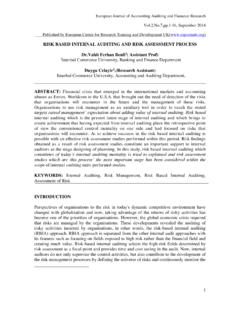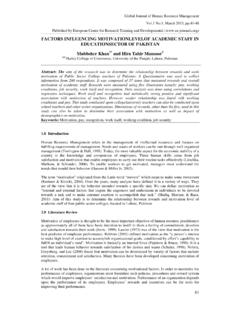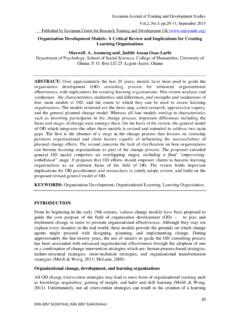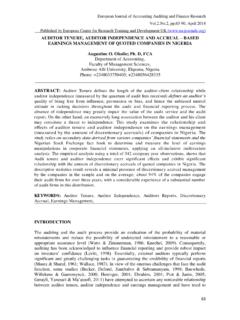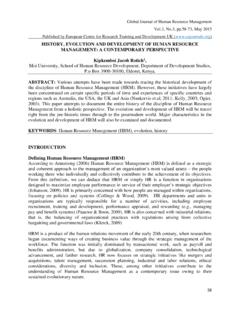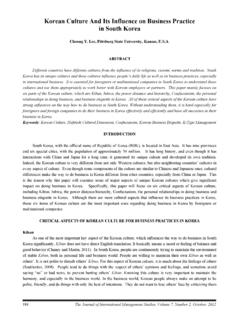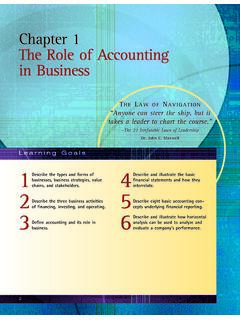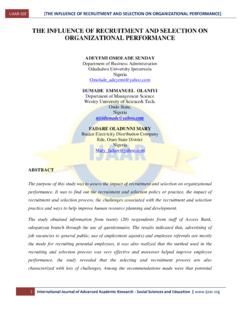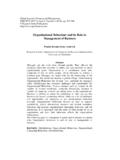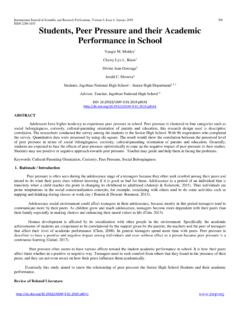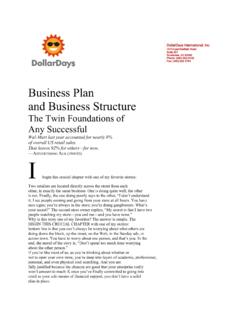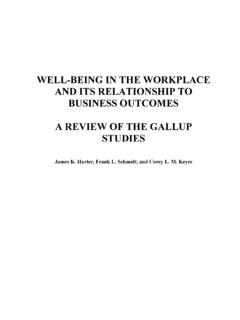Transcription of Influence of Social Media on Communication Skills and ...
1 International Journal of Education, Learning and Development , , , August 2019 Published by European Centre for Research Training and Development UK ( ) 57 Print ISSN: 2054-6297(Print), Online ISSN: 2054-6300(Online Influence OF Social Media ON Communication Skills AND ACADEMIC PERFORMANCE OF business EDUCATION STUDENTS IN COLLEGES OF EDUCATION IN SOUTHWEST, NIGERIA 1 Lawrence Femi Ademiluyi, PhD business and Entrepreneurship Education, Kwara State University,Malete, 1530, llorin, Kwara, Nigeria.)
2 2 Joshua SuleMamman, PhD Department of business and Entrepreneurship Education, Kwara State University, Malete 1530,Ilorin. Kwara State, Nigeria 3 Oladeji, Ayinde Dauda Departmentof business Education Emmanuel Alayande College of Education, Oyo ABSTRACT: The study assessed the Influence of Social Media on Communication skill acquisition and academic performance of business education students. The study had two specific purposes, three research questions and two hypotheses. Descriptive survey design was adopted for the study.
3 The population consisted of 461 respondents. A structured questionnaire tagged Influence of Social Media on Communication Skills and Academic Performance Questionnaire (ISMCSAPQ) was used to collect data from the respondents. The instrument was subjected to face and content validation by three experts with a Cronbach reliability coefficient of Mean and standard deviation were used to analyse the data to answer the research questions while linear regression statistic was used to test the hypotheses.
4 The findings revealed among others that Social Media use significantly positively Influence Communication Skills and academic performance of business education students in colleges of education. It was concluded that Social Media when used effectively for academic purposes is capable of improving Communication Skills and academic performance of business Education students in colleges of education. The study is potentially of great significance to teachers and students, enabling them to recognize, accept and deploy Social Media as implements of teaching, learning and skill acquisition.
5 It was recommended among others that students should be encouraged to use Social Media to acquire necessary information while government provide conducive learning environment such as e-library for academic excellence. KEYWORDS: Social , Media , business , education, Communication , Skills , academic, performance International Journal of Education, Learning and Development , , , August 2019 Published by European Centre for Research Training and Development UK ( ) 58 Print ISSN: 2054-6297(Print), Online ISSN: 2054-6300(Online INTRODUCTION The Social Media is more than just a means of seeking information.)
6 The Social Media are used to connect with others, for business or commercial purposes, to make new friends, reawaken old friendships and recover long lost relatives. The emergence of Social Media simplified the whole process of Communication because they are easy to use (Wetzel, 2010). Social Media comprise activities that involve socializing and networking online through words, pictures and videos. Kaplan and Haelei (2010) defined Social Media as a group of internet-based applications built on the ideological and technological foundations of which allows the creation and exchange of user-generated content.
7 Social Media tools have been developed in order to maintain, manage and improve Social interactions between people, enable people to access and comment on contents authored by others. These evolving learning environments will in doubt allow students to learn anytime and anywhere (Wetzel, 2010). Social networks may play an important role in raising awareness about the reliable sources of information among the students and society by providing alternative sources of knowledge (Battrawi & Muhtaseb, 2013).
8 Gross (2010) stated that Social Media are means that employ mobile and web based technology to create highly integrative platforms which individuals and community share, create, discuss and modify user generated content. Social Media sometimes called Social networking is a collaboratively produced and shared Media content to network communities. Enang (2014) explained that Social networking sites are applications that enable users to connect by creating personal information profiles allowing friends and colleagues to have access to those profiles, and sending e-mails and instant messages to each other.
9 Giving examples of Social Media , Gupta (2014) in Umoru (2015) posits that Social networking sites include Facebook, Twitter, Linkedln, Google+, Internet Forums, Chat rooms and message boards where people meet and discuss topics of interest, Flickr and vimeo, Blogs, Wikis, and Social book marking. Social Media sites launched in 2000 according to Junco and Herbert (2011) were Lunarstom, Six degrees, Cyworld, Wikikedia and Ryze. In 2001, Fotolog, Sky blog and Friendster were launched and in 2003, Muspace, Linkedln, Lastin, and Hi5 came along, In 2004, Facebook Harvard, Dogster and Mixi evolved; and in 2005, Yahoo 360, Youtube, Cyworld and Black Planet emerged.
10 Kaplan and Haelein 2010 in Umoru (2015) categorized Social Media into seven types each indicating the purpose for which it could be utilized: collaborative projects (Wikipedia); Blogs and micro blogs (Twitter); Social news networking sites (Digg and Leakernet);content communities (Youtube and Daily motion); Social networking sites (Facebook); virtual game world; (World of warcraft); and virtual Social world (Second life).There are various categories of Social Media sites used in education which are also useful in business education for enhancing students skill acquisition and academic performance.
